
Undergravel filters, long used in marine aquariums, have enjoyed a surge in popularity in freshwater aquariums in the past decade as the importance of the nitrogen cycle has become apparent. These filters provide an effective means of minimizing ammonia and nitrite levels in aquarium water, and are simple and inexpensive to install. Because they are hidden from view and perform their task without fuss, they can easily be ignored or neglected. Proper setup and maintenance are, in fact, required for these filters to operate effectively over the long term.
Undergravel filters work by drawing aquarium water down through the layer of gravel at the bottom of the aquarium. In a well-established aquarium, the surface of each particle of this gravel is inhabited by bacteria that metabolize nitrogen-bearing compounds present in the water, converting those compounds that are toxic to fish into forms that are less toxic — ammonia into nitrite, and then nitrite into nitrate. Nitrate is relatively non-toxic to fish and can be used as a nutrient by aquatic plants or removed from the aquarium by water changes. Because the grains of gravel offer such a large total surface area, a large population of the bacteria can be supported, thus providing efficient nitrification. This process, known as the nitrogen cycle, is essential to maintaining proper water quality.
The undergravel filter consists of a raised platform on which the gravel is placed and through which the water is drawn. There is a space beneath the platform into which water flows after passing through the gravel. The filtered water is pumped from this space and returned to the upper region of the aquarium. Debris in the aquarium, such as solid fish waste and uneaten food, is drawn down into the gravel by the flow of water. Some of this material passes through the entire filter bed and enters the space under the filter plate. A small amount of this material will be pumped into the aquarium again. The water flow under the filter plate is relatively gentle, however, and therefore a significant percentage of this material will settle on the aquarium bottom. Over time, this material will accumulate.
Because the water flowing around this debris is oxygenated, anaerobic decay processes are minimized. Indeed, there is no evidence indicating that the accumulation has any adverse effects on water quality. If, however, the buildup becomes excessive, it can reduce the rate of water flow through the system and thereby decrease the efficiency of the biological filtration process. When the space under the undergravel filter plate contains that much material, the only option may be to remove everything in the aquarium — in other words, a complete teardown. The plate can then be lifted out of the aquarium and the bottom of the aquarium siphoned clean.
It is difficult, however, to determine when, or even if, such a buildup has occurred. Unless the aquarium has a transparent bottom that can be viewed from underneath, a visual inspection for accumulation of detritus is impossible. If it is possible to lower a siphon tube all the way to the bottom of one of the lift tubes of the undergravel filter, and a significant amount of solid material is siphoned out, a cleaning should be considered. Of course, the extent of debris accumulation will remain unknown until the filter plate is lifted out.
All parts of an aquarium accumulate dirt after sufficient time. Even parts exposed only to "clean" water, such as the outflow hose of a canister filter, will develop a buildup of dirt and slime. Therefore, even with the use of a powerhead to increase the rate of water flow beneath the plate and periodic vacuuming of the gravel — thus eliminating particulate matter from beneath an undergravel filter — the space below the filter plate is still susceptible to the gradual buildup of slime, dirt and debris. As noted above, this material can reduce the efficiency of the filter by reducing the flow rate of water through the system.
A number of measures may be taken to forestall or prevent such clogging. Increasing the flow of water through the undergravel space (for example, by using powerheads instead of airstones) may reduce the accumulation of particles there, but keep in mind that the higher flow rate will also increase the amount of debris sucked through the gravel bed. Periodic siphoning of the space under the filter plate certainly helps. This can be performed by inserting a siphon tube or the intake hose of a canister or diatomaceous earth filter into the lift tubes of the undergravel filter and drawing water out until no more debris is visible. This technique is not 100 percent effective, however, and a buildup of slime and other debris that cannot be vacuumed will eventually occur.
The most effective way of preventing detritus accumulation in a standard undergravel setup is to remove as much of the debris as possible from the system before it has a chance to work its way through the substrate and into the undergravel space. This can be accomplished in two ways. First, an efficient power filter can remove much solid particulate matter from the water before it can settle on the gravel. Efficient mechanical filtration will, in turn, improve the efficiency of the undergravel filter. Second, periodic vacuuming of the gravel with an appropriate siphon device will remove significant amounts of debris in the gravel bed and thus allow unimpeded water flow through the gravel bed. Removing this material from the aquarium along with the water in which it is suspended is an excellent way of making the frequent partial water changes that are an important part of good aquarium maintenance.
Overfeeding the fish can increase the clogging rate of the undergravel filter, as well as any mechanical filters that are operating on the aquarium. If the debris that is vacuumed from the gravel includes any uneaten food, the fish are being overfed. If detritus from the fish accumulates so rapidly that vacuuming more than once a week or so is required, the aquarium may be overstocked. In such a case, care must be taken to keep biological filtration at peak efficiency. Only one-third to one-half of the substrate should be vacuumed at any one time, and the area of the gravel bed being cleaned should be alternated each time. This will prevent excessive losses of nitrifying bacteria, which might lead to dangerous concentrations of ammonia or nitrite in the aquarium. Of course, avoidance of overstocking is a much preferable method of nitrogen cycle management.
An undergravel filter run in reverse flow can also reduce the problem of material under the filter plate. In this technique, water that has been mechanically filtered through a canister or other power filter is pumped down the lift tubes into the undergravel space and then flows up through the filter plate and gravel into the aquarium. Very little debris can accumulate beneath the filter plate, because only prefiltered water enters that space, and the upward direction of flow through the gravel for the most part prevents debris from working its way through the gravel bed and under the filter plate. The biological filtration capabilities of the undergravel filter are retained with this method, although it is felt by some that reverse flow discourages aquatic plant growth.
An alternative solution is to perform the biological filtration at another site in the system, one that is easily and totally accessible to cleaning. In this setup, the undergravel space is eliminated altogether. An excellent way of doing this is to utilize a canister filter as a biological filtration unit. If the filter is of sufficient capacity, it can perform both mechanical and biological filtering functions. For large aquariums, one or more outside power filters can be utilized.
Canister filters, like undergravel filters, are excellent sites for biological filtration. Water travels at a relatively leisurely pace through the filter and is in prolonged contact with a large volume of filter material, which acts as a substrate for colonies of nitrifying bacteria. The greater the surface area available for the bacteria, the larger the potential bacteria population. The longer the water is in contact with the filter medium, within reason of course, the greater the potential efficiency of the nitrification process. Thus, a large-volume canister filter with a relatively low flow rate provides a superb set of conditions for the two-step conversion of ammonia to nitrate. A good rule of thumb for filter flow rates is no more than four or five aquarium volumes per hour.
Perhaps even better than a canister filter in its capacity for biological filtration is a trickle, or wet/dry, filter. In this design, aquarium water is dripped or sprayed over a bed of substrate medium on which the nitrifying bacteria grow. The water is then collected and pumped back into the aquarium. The volume of substrate medium is generally as great as or greater than that in a comparable canister filter, and the trickle filter provides the added advantage of highly efficient aeration of the return water. Water is aerated by contact with air at its surface. As the aquarium water trickles down over the nitrifying substrate, it forms a thin film around the surfaces of filter medium and presents a large surface area to the surrounding air, allowing rapid and effective gas exchange. Oxygen dissolves into the water from the air, and carbon dioxide escapes in the opposite direction. The aerobic nitrifying bacteria receive the oxygen necessary for their activities, and the water that returns to the aquarium is saturated with oxygen and has released surplus carbon dioxide.
Outside power filters, which typically hang on the back of the aquarium, although capable of providing both mechanical and biological filtration, are ultimately better as mechanical filters than biological filters. This is because the gravel bed of an undergravel filter simply provides a larger surface area for bacteria than the medium in a power filter. For lightly stocked aquariums, an outside power filter may be adequate, but for aquariums with higher densities of fish, more biological filtration is often needed. For this reason, outside power filters are often paired with undergravel filters. The strength of each complements the weakness of the other, to the overall benefit of the fish in an aquarium.
These power filters can pump a lot of water through their media in a short time. The advantage here is that the more often the water passes through the filter in a given period, the greater the filter's effectiveness at removing suspended particles. This is, after all, the basis for effective mechanical filtration. However, the high flow rate means less time for the water to be in contact with the bacterial substrate. Also, the volume of the filter material is much lower in a typical power filter than in a canister filter that is likely to be used on the same size aquarium. In fact, such filters often utilize cartridge media that may provide only a half-inch or so of material through which the water will flow. The result is less surface area for bacterial attachment and therefore less potential for ammonia and nitrite oxidation.
Another simple method of providing biological filtration is with the use of a sponge filter. These utilize air flow to draw water through a porous sponge material in and on which reside the nitrifying bacteria. Because of the large surface area made available by the sponge, nitrification is very efficient. Water flow through the sponge can be increased by using a powerhead instead of an airlift. Because of the small pore size of sponge filters, they are easily clogged by solid waste material. Fortunately, they are just as easily cleaned by removing them from the aquarium and squeezing them in water of approximately the same temperature as that of the aquarium. Water that is too hot, too cold or too heavily chlorinated should not be used, as this will kill the bacteria that occupy the sponge.
Undergravel filters, although not the only method of biological filtration available, retain their popularity because they do a good job, are simple to operate and are relatively inexpensive. Alternative methods such as canister or trickle filters, while equally effective, are far more costly. Sponge filters are far smaller than most undergravel filters and have a smaller nitrification capacity. While it is true that biological filtration is essential to the well-being of most aquariums, it is equally true that the exact location of such filtration in the system is irrelevant. Regardless of how the requisite nitrification is accomplished, what is most important is that any required maintenance be performed regularly and faithfully. In this way, the long-term success of the aquarium, and its owner's satisfaction with it, are enhanced.
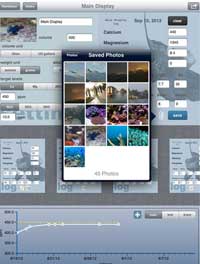 Reefdoser Pro for iPad Ships
Reefdoser Pro for iPad Ships
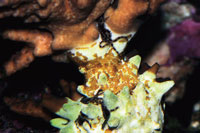 Coral and Invertebrate Quarantine Procedures
Coral and Invertebrate Quarantine Procedures
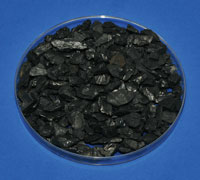 Aquarium Carbon
Whether it is for a small betta bowl, 6 million gallons
Aquarium Carbon
Whether it is for a small betta bowl, 6 million gallons
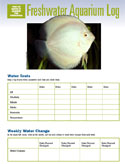 Aquarium maintenance logs for freshwater, saltwater and reefkeeping aquarists
Thank you for signing up for the FishChannel newsletter, the
Aquarium maintenance logs for freshwater, saltwater and reefkeeping aquarists
Thank you for signing up for the FishChannel newsletter, the
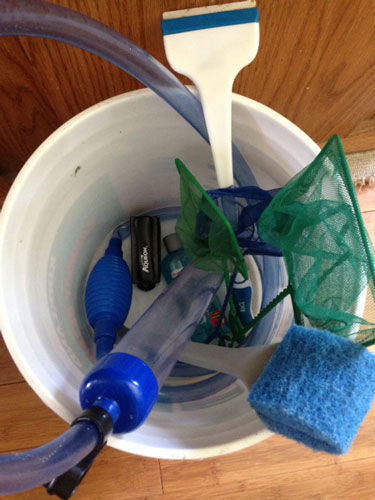 What to Keep in Your Aquarium Maintenance Bucket
It is too easy for hobbyists, especially new ones, to become
What to Keep in Your Aquarium Maintenance Bucket
It is too easy for hobbyists, especially new ones, to become
Copyright © 2005-2016 Pet Information All Rights Reserved
Contact us: www162date@outlook.com